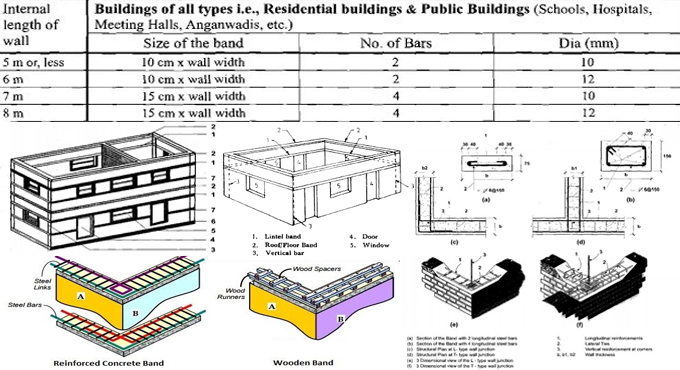
Brief explanation of horizontal bands in Masonry Buildings
Horizontal bands in masonry buildings stand for seismic bands which include reinforced concrete. This construction article sheds light on the types of horizontal band, their location, design and applications etc.
It is found that a significant number of masonry buildings unexpectedly fall against earthquake movement because of its fragile property i.e. it does not contain any substantial ductility stages.
Integrate horizontal bands with the masonry buildings to significantly enhance the seismic resistance of masonry buildings. The benefit of applying horizontal bands is that they will allow all the components to be detained collectively as a single unit. It will get total resistance from the entire building, except providing a separate contribution.
Definition of Horizontal Bands in Masonry Buildings:
The horizontal band is described as a process of reinforcing the masonry buildings with the bands containing greater tension strength. This is specifically allowed in areas where two structural elements of a building coincide in order to develop a connection simultaneously and they would perform as a single unit.
Horizontal bands are also defined as seismic bands which contain reinforced concrete running flat during all the external and internal masonry wall components.
Location of Horizontal Bands in Buildings - Horizontal bands are employed at the following levels:
? At the plinth level of the building
? At the levels of lintels (i.e. at door and windows)
? At the ceiling levels

Ref.: theconstructor.org
The necessity of horizontal bands in roof level is not compulsory if the roofs belong to reinforced concrete or reinforced masonry slab units assuming that they contain a depth of 2/3rd wall thickness.
To read the complete article, go through the following link theconstructor.org

